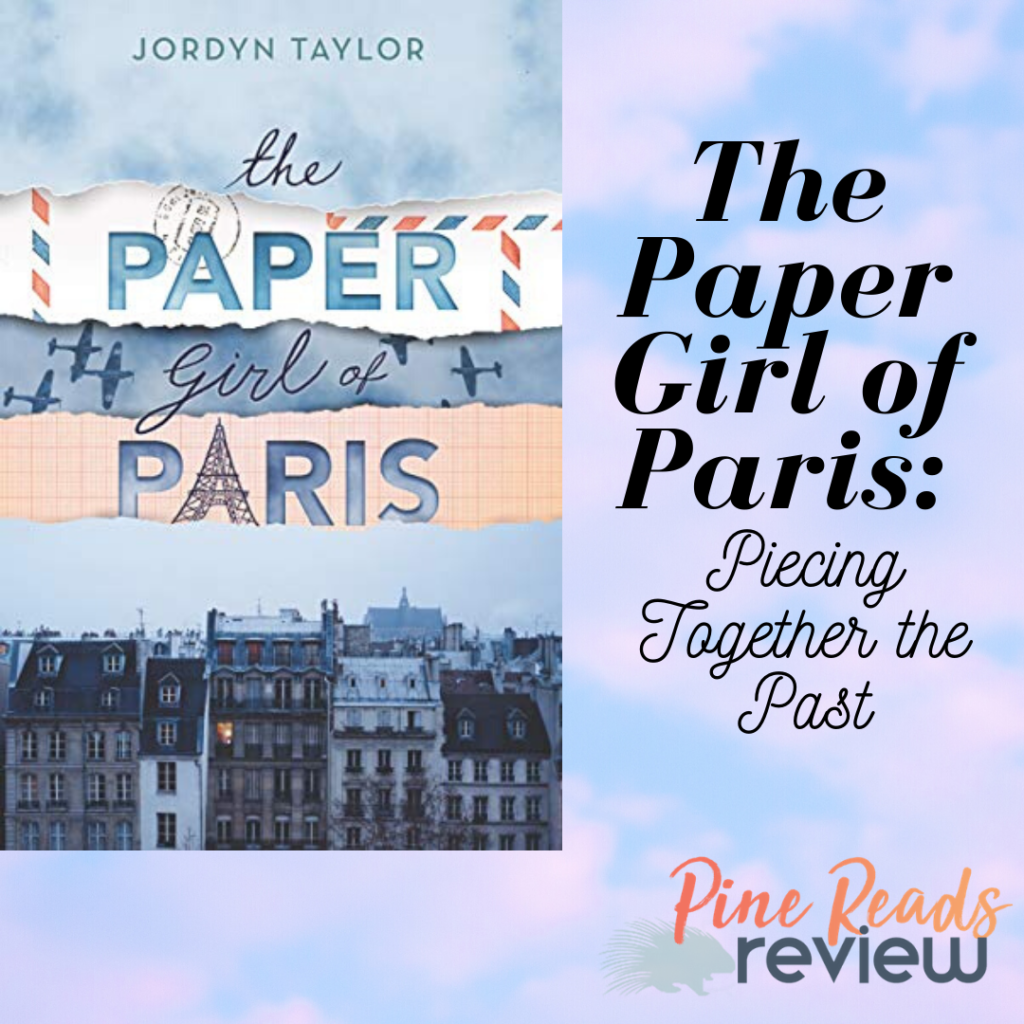
When I was sixteen, I visited Paris and fell in love.
I know what you’re thinking, but no, I (unfortunately) did not fall in love with a handsome stranger who swept me off my feet and made me the heroine of what would become a love story for the ages.
No, I fell in love with the city. So much so, in fact, that I swore I wanted to make Paris my home one day. While that hasn’t happened (yet), that week spent in Paris created an Eiffel Tower-shaped spot in my heart for all things French…including novels.
And The Paper Girl of Paris by Jordyn Taylor is no exception.
But when Alice Prewitt, one of the protagonists of this novel, was sixteen and visited Paris, her intentions were quite different than mine. Whereas I longed to experience the magic and find out exactly what has captivated so many people about the City of Light, Alice wanted to solve a mystery about her family—and maybe fall in love along the way.
A few months before Alice’s half of the book takes place, Alice’s grandmother passes away and leaves Alice an abandoned apartment in Paris that hasn’t been touched in over seventy years. Like any curious person who’s been left with something strange from a family member’s will, Alice and her parents decide to spend the summer in Paris. While her parents spend most of the time in their Airbnb, Alice discovers the diary of her grandmother’s sister, Adalyn Bonhomme, and embarks on a quest to learn as much about her family as she can.
In a clever twist, the other half of the book is narrated by Alice’s great-aunt: Adalyn. In 1940, sixteen-year-old Adalyn is living in the midst of the Nazi Occupation of France. Everything she’s ever known about her city is changing, and Adalyn is determined to fight back. She joins a resistance group and begins to fall in love herself, but Adalyn soon discovers that the fight for freedom comes with costly repercussions to those she most loves.
The dual-narration of Alice and Adalyn presented this book with the opportunity to have one foot in contemporary and the other in historical fiction. It was a fresh and unique method to explore the past…and my personal favorite element of the book. While Alice dives into Adalyn’s diary and breaks down the pieces of the past into modern ideas, Adalyn’s chapters bring the past into the present and make it compelling and immediate. The novel brushes the dust off this chapter of history, but Adalyn’s story would not have felt complete without Alice’s and vice versa.
The two young women live in extremely different times, but many parts of their characters felt similar. Both girls have an immense love for their families, but they both also struggle with them. Adalyn’s close relationship with her sister (Alice’s future grandmother) bends precariously throughout the book. And while Alice loves her mother dearly, a large part of Alice’s narration includes frustrated descriptions of her mother’s mental illness and how she longs to help her. Both girls begin serious romantic relationships in the story as well, and as Adalyn becomes more confident in herself, so too does Alice. The parallelism of family struggles and romance connects Alice and Adalyn despite the decades that stretch between them.
But that’s where the novel falls just a bit short, in my opinion. While I did enjoy reading about Alice’s discovery of this long-lost great-aunt, once Adalyn’s narration began, Alice’s sections did not feel as powerful as Adalyn’s fight against an oppressive regime. I found myself skimming Alice’s narration in an effort to return to Adalyn’s sections faster. Alice’s complaints about her life and her irresponsible actions seemed petty and immature in comparison to Adalyn’s valiant resistance work. To me, this negative juxtaposition that is only revealed when the two narratives are placed directly next to each other is the downside of the past/present dual-narration.
But for the most part, the exploration of the past through the perspectives of one living through it and one discovering it seventy years later was enjoyable and refreshing. There is a very real satisfaction to be had when the past and the present fuse together at the end, and that satisfaction is only possible because of the unique narrative.
The fascinating narrative also makes possible an exploration of Paris that spans both streets and years. Watching Alice and Adalyn walk the same paths with seventy years between them took me back to my own visit to Paris. This story not only reminded me of a city that I love, but also intertwined Alice and Adalyn’s stories while piecing together the past.
PRR Writer, Wendy Waltrip
Pick up your own copy today!